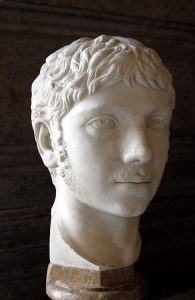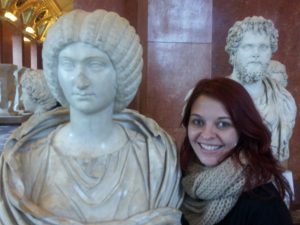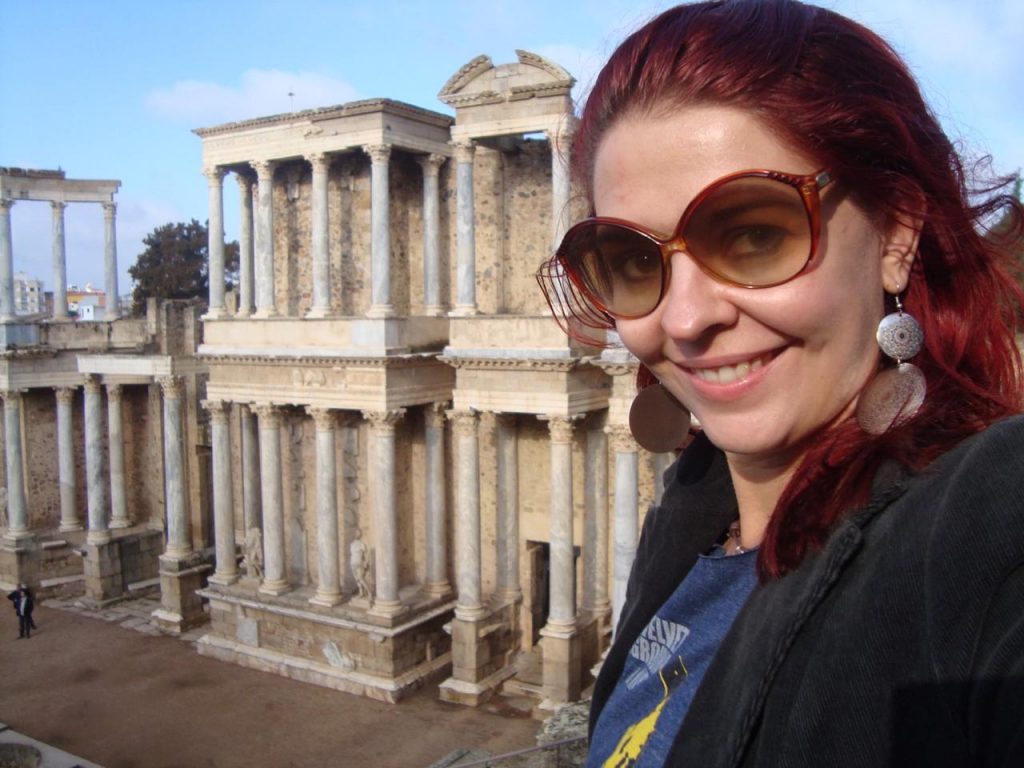São Paulo – Brazilian researcher Semíramis Corsi Silva (pictured) is conducting in-depth studies and providing a fresh perspective on the history of a Syrian dynasty that ruled Rome from 193 to 235, AD. She’s a professor in the Postgraduate Department/Program in History at the Federal University of Santa Maria (UFSM), in Santa Maria, Rio Grande do Sul. The primary subject of her research is emperor Elagabalus, who reigned over Rome for about four years, from 218 to 222.
The Brazilian researcher is looking to understand the emperor’s representations, political-administrative and religious practices and gender and cultural identity elements. “He was a young Syrian man, hailing from the elite in an ancient city called Emesa,” Semíramis told ANBA via email. Emesa used to be located in what now is Homs, Syria. Elagabalus was the ruler of Rome from age 14 to 18, a member of the Severan Dynasty.
Syrians rose to Roman power through Julia Domna, a Syrian woman who married Roman general Septimius Severus – he later ascended to the throne as emperor of Rome. Severus’ and Julia’s two children also became emperors, but a coup ousted the family for a short while. The dynasty rose back to power through another coup, planned by Julia’s sister Julia Maesa, who made her grandson Elagabalus emperor.
“Elagabalus, then aged 14, is made emperor of Rome without ever having been to Rome. Therefore, in addition to the fact that the transfer of power came from his great-aunt Julia Domna, i.e. in a matrilinear way, his grandmother Julia Maesa’s and mother Julia Soaemias’ importance during his rule was great,” the researcher explains. At that point, Syria was a province of Rome.

Silva has completed the first and is now into the second phase of her research. Earlier on, the goal was to find out what the Greek-Romans wrote on Elagabalus. “The writings were not too flattering, precisely because he was Syrian and he emphasized his customs upon arriving at Rome, thereby leaving aside key elements of the Roman imperial order,” she argues. Elagabalus placed members of the Syrian elite in high positions, displeasing Roman elites, and that was reflected in the texts, Semíramis determined.
The second phase will look into the emperor’s practices, especially the intersection of his religiosity and gender and body issues. “Elagabalus was a priest to a solar god named Elagabal, and his rites involved certain bodily practices, as well as elements of sexuality and certain attires that appear to have shocked the writers; In their accounts of the emperor, they seem to have considered said practices as womanlike,” Semíramis says.
The name Elagabalus, by the way, predates his rise to the throne and his connection with the cult of Elagabal. His being called that shows how Romans used to view his devout religiosity, according to the historian. Elagabalus’ birth name was Varius Avitus Bassianus, and his emperor name was Marcus Aurelius Antoninus.
History with a Roman bias
The Brazilian researcher questions whether the emperor’s practices, pointed out by his enemies and used against him in an exaggerate, demeaning way really existed as described. The Roman Cassius Dio mentioned that Elagabalus wanted to undergo surgery in his private parts, which Semíramis believes might be a rite of initiation for priests in the cult of Elagabal. “There’s no telling for certain whether the garments Elagabalus wore as a priest to Elagabal were feminine to him, or whether they were seen as feminine by the writers who were his enemies, simply because they were different than Greek-Roman priestly dress, and in a bid to criticize the emperor,” she says

Silva perceives a bias in the writings from that time. “There was strong opposition against this emperor for his political-administrative measures, but also due to his Syriac cultural background which seemed so different in the eyes of Greek and Roman traditionalists. Thus, imbued with an aristocratic, conservative outlook, those writers combined elements of Syriac/Oriental gender and cultural identity to criticize Elagabalus,” she posits.
The historian asserts that besides being the first dynasty with provincial emperors devoid of family ties with Rome and the first with Eastern roots, one of the defining aspects of the Severan Dynasty was the female power of Syrian women. Julia Domna stood out as a patron of intellectuals, was responsible for the correspondences of her emperor son, and a middleman between him and the aristocrats. Since Julia Maesa had very young emperor grandsons, she was tasked with the decision-making. The mothers of emperors Elagabalus and Severus Alexander – who ascended to the throne after Elagabalus, where he remained until 235 AD – also played similar roles.
The holder of master’s and doctorate degrees in History from Universidade Estadual Paulista (Unesp), Semíramis undertook a research internship at Universidad de Salamanca, Spain, and an internship at the Bibliothèque Gernet-Glotz – AnHiMA in France. While pursuing her doctorate, started reading up on the Severan Dynasty, with the biography of Apollonius of Tyana, written by the Greek sophist Philostratus, a personal friend to Julia Domna. Although she was intrigued, she didn’t explore the subject further in her doctorate work. Once she started working as a UFSM professor and researcher, in 2015, she decided to study the emperor.
A personal passion
A native of São Sebastião do Paraíso, Minas Gerais, Silva has no Arab background and has never been to Syria – a dream she plans on fulfilling soon. “I’ll sometimes quip with my students and colleagues that I have some spiritual connection, because my name, Semíramis, is what Greeks used to call a legendary Assyrian queen who conquered a sprawling empire spanning much of what are now the Arab countries. She was the one who bestowed the name ‘Syria’ on Elagabalus’ area, and on what’s now the country. I’ll joke that my mother, who picked my name, must have been inspired by this passion that would one day be ignited in me,” she says.
Queen Semiramis is always popping up whenever the researcher pores over documentation on the Severan Dynasty. She knows she’s not actually genealogically connected with the ancient or contemporary Syrian or Arab world. “But that goes to show that I carry the history of that Oriental region with me all the time, albeit coincidentally, and I intend to keep studying it in a serious, committed way,” she says.
Semíramis believes that historical accounts of the so-called Oriental peoples, from Antiquity to our times, are troublesome for many reasons. “In Antiquity we had the constructs of Greek and Roman writers, overwhelming the barbarian peoples, among them the Orientals, inventing their ‘others’ in an antagonizing, stereotyped, exotic, essentializing way,” she claims. “In contemporaneity, much credit was given to history coming from the Greeks and Romans, because we see them as the birthplace of the West,” according to her.
“Besides, in contemporaneity, the histories of the different peoples termed ‘Oriental’ are being told through the prism of Orientalism, a knowledge about the East that was created in the West as a discourse of power and domination,” she explains. According to Semíramis, this type of knowledge needs to be denounced by scholars who champion what Edward Said called Humanism, which in short is the commitment to deconstructing one-size-fits-all, reductionist formulae. Said was one of the most relevant Arab intellectuals. “Such is my connection with Syria: a personal passion and an intellectual commitment to telling its story in a critical, responsible, humane way,” she asserts.
Translated by Gabriel Pomerancblum




